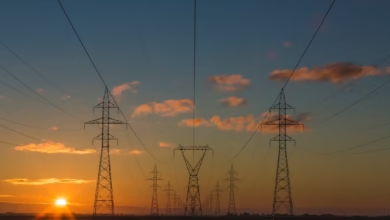Navigating the Oil Transportation Landscape: Pipelines, Tankers, and Their Impact on Global Trade and Environmental Safety

In today’s interconnected world, the transportation of oil is a vital component of the global economy. As we rely heavily on crude oil for energy and various products, understanding the methods of oil transportation becomes increasingly important. From pipelines that stretch across continents to tankers navigating vast oceans, the logistics of moving oil are complex and multifaceted. This article delves into the various methods of oil transportation, including the latest technologies and innovations that enhance efficiency and safety.
We will explore how oil transportation impacts global oil trade and market trends, particularly in the context of fluctuating oil prices and the influence of OPEC on supply chains. Additionally, we will examine the environmental considerations and regulatory challenges that accompany these transportation methods, highlighting the ongoing discussion surrounding the environmental impact of oil, the rise of biofuels, and the pursuit of oil alternatives.
As we navigate the intricate landscape of oil transportation, we will uncover the critical role it plays in ensuring energy security and its implications for oil investing and compliance in a rapidly evolving market. Join us as we unpack these essential topics and explore the future of oil transportation in a world increasingly focused on sustainability and innovation.
- 1. Understanding Oil Transportation Methods: Pipelines, Tankers, and Beyond
- 2. The Impact of Oil Transportation on Global Oil Trade and Market Trends
- 3. Environmental Considerations and Regulatory Challenges in Oil Transportation
1. Understanding Oil Transportation Methods: Pipelines, Tankers, and Beyond
Oil transportation is a vital component of the global oil trade, influencing everything from oil prices to energy security. Understanding the various methods of transporting oil—such as pipelines, tankers, and alternative methods—provides insights into the complexities of the oil market and its ongoing evolution.
Pipelines are one of the most efficient and cost-effective ways to transport crude oil overland. They are crucial for moving oil from extraction points, such as oil fields and offshore drilling sites, to refineries and storage facilities. The extensive network of oil pipelines not only facilitates the flow of oil but also plays a significant role in the oil supply chains, ensuring that crude oil reaches markets in a timely manner. However, the construction and operation of pipelines can raise concerns regarding compliance with environmental regulations and the potential for spills, which highlight the environmental impact of oil transportation.
On the other hand, oil tankers are instrumental in moving crude oil across oceans and seas, connecting regions rich in oil reserves with markets that rely on this essential resource. The size of these vessels allows for the transport of large quantities of oil, making them a critical part of the global oil trade. However, the logistics involved in tanker transportation, including the need for oil storage and the risks associated with oil spills, can complicate the already intricate dynamics of oil geopolitics.
Beyond pipelines and tankers, other methods such as rail and truck transport are used, especially in areas where pipeline infrastructure is lacking. These methods, while flexible, are generally more expensive and can have a greater environmental impact compared to pipelines.
The rise of shale oil production and oil sands extraction has also changed the landscape of oil transportation. These unconventional sources require specialized transportation and processing techniques, influencing oil refining operations and downstream oil products, including petrochemicals. As oil market trends shift, driven by factors such as OPEC regulations and emerging oil alternatives like biofuels, the need for efficient and safe oil transportation methods becomes increasingly critical.
In summary, oil transportation encompasses a variety of methods, each with its own benefits and challenges. Understanding these methods is essential for stakeholders in oil investing, as fluctuations in oil supply and demand can significantly impact oil prices and energy markets worldwide. As we move toward a more sustainable energy future, the role of oil technologies and compliance with environmental regulations will be paramount in shaping the future of oil consumption and the industry's overall impact on global energy security.
2. The Impact of Oil Transportation on Global Oil Trade and Market Trends
The transportation of oil plays a crucial role in shaping global oil trade and influencing market trends. As crude oil is transported via pipelines, tankers, and other methods, various factors come into play that affect oil prices and the overall dynamics of the oil market.
One significant aspect is the impact of oil supply chains on the accessibility of oil reserves. Efficient oil transportation systems enable faster delivery from extraction sites, including offshore drilling platforms and shale oil fields, to refineries and storage facilities. This efficiency is critical for meeting the growing oil consumption demands, especially in emerging economies where energy security is a priority.
Global oil trade is also heavily influenced by geopolitical factors. OPEC's decisions on production quotas directly affect oil prices, as any disruption in oil transportation due to conflicts or regulatory changes can lead to significant fluctuations. For instance, tensions in key oil-producing regions can hinder transportation routes, resulting in increased oil price volatility and impacting oil price hedging strategies for investors.
Moreover, advancements in oil technologies, such as improved pipeline systems and innovative tanker designs, have enhanced the safety and efficiency of oil transportation. This has a dual benefit: it reduces the environmental impact of oil transport while also supporting the growth of downstream oil sectors, including petrochemicals. As the demand for biofuels and oil alternatives rises, oil transportation methods must adapt to accommodate these changes while still ensuring reliable delivery of traditional crude oil.
Lastly, the interplay between natural gas and oil transportation cannot be ignored. As markets evolve, the integration of natural gas into oil supply chains can present new opportunities for oil investing and compliance with environmental regulations. The ongoing exploration of oil sands and the need for sustainable practices within oil field services further emphasize the importance of effective transportation methods in navigating the complexities of the global oil market.
In conclusion, the impact of oil transportation on global oil trade and market trends is profound. Understanding these dynamics is essential for stakeholders to navigate the shifting landscape of oil prices, energy security, and the future of oil consumption.
3. Environmental Considerations and Regulatory Challenges in Oil Transportation
The transportation of oil, whether through pipelines, tankers, or other methods, comes with significant environmental considerations and regulatory challenges that must be addressed to ensure sustainable practices in the oil industry. As crude oil continues to play a vital role in the global oil trade, the environmental impact of oil transportation cannot be overlooked. Oil spills, habitat disruption, and air pollution are some of the major concerns associated with this industry.
Pipelines, while efficient for transporting large volumes of oil, pose risks of leaks and ruptures that can lead to devastating environmental consequences. Regulatory frameworks governing oil pipelines vary by region, with many countries implementing stringent oil regulation and compliance measures to mitigate risks. The challenge lies in balancing efficient oil supply chains and energy security with the need to protect natural ecosystems.
Tankers, essential for transporting oil across oceans, also face scrutiny regarding their environmental impact. Incidents of oil tanker spills have raised questions about the effectiveness of current regulations and the need for enhanced oil field services to promote safer transportation methods. Additionally, offshore drilling operations, often necessary for accessing oil reserves, can lead to significant ecological disturbances, making regulatory compliance even more crucial.
As the oil market trends evolve, particularly with the rise of shale oil and oil sands, the push for oil alternatives such as biofuels and natural gas is gaining momentum. This shift towards cleaner energy sources reflects a growing awareness of the environmental impact of oil consumption and the necessity for sustainable practices in oil refining and downstream oil activities.
OPEC and other regulatory bodies are increasingly recognizing the importance of addressing these environmental challenges while also managing oil prices and geopolitical dynamics. The intersection of oil geopolitics and environmental regulations will shape the future of oil transportation, requiring innovative oil technologies and strategies for oil price hedging.
In conclusion, as the global demand for oil continues, the oil industry must navigate the complex landscape of environmental considerations and regulatory challenges. By prioritizing compliance and investing in safer transportation methods, the industry can work towards minimizing its environmental footprint while maintaining energy security and supporting the global oil market.
In conclusion, oil transportation remains a vital component of the global oil trade, influencing everything from oil prices to energy security. As we have explored, various methods such as pipelines, tankers, and innovative technologies play pivotal roles in the movement of crude oil and refined products. The dynamics of oil market trends are heavily intertwined with these transportation methods, shaping the strategies of OPEC and impacting shale oil developments and offshore drilling initiatives.
However, the environmental impact of oil transportation cannot be overlooked. Regulatory challenges and compliance measures are essential to mitigate risks associated with oil spills and to uphold environmental standards. As the world shifts towards oil alternatives and biofuels, the landscape of oil consumption is evolving, prompting discussions on how to balance energy needs with sustainability.
Investors and stakeholders in oil field services must stay informed about oil regulations and emerging technologies that can enhance efficiency and reduce ecological footprints within oil supply chains. By understanding these complexities, we can navigate the intricate world of oil transportation, ensuring a balance between meeting global energy demands and preserving our environment for future generations. As the industry progresses, remaining vigilant about the geopolitical implications and adapting to new trends will be crucial for anyone involved in oil investing or policy-making in the energy sector.





